07.10.20 - See what Daniels students created with funding from the U of T COVID-19 Student Engagement Award
At the start of the summer, some Daniels Faculty students won grants from the University of Toronto's COVID-19 Student Engagement Award. To qualify for that funding, each student or group of students had to propose a project that related to the idea of building global community during the COVID-19 pandemic.
The students had until September to deliver their final work. So, what did they produce? Let's take a look.
A community survey
Five Daniels undergrads — Aisling Beers, Declan Roberts, Gemma Robinson, Jay Potts, and Sheetza McGarry, as well as an engineering student, Savanna Blade — formed a group called Studio Babble. They used their grant money to orchestrate a community survey in their neighbourhood, Toronto's Seaton Village.
They started by designing a suggestion-box-style receptacle for survey responses. The box, which they intentionally modelled after a child's lemonade stand to give it a touch of whimsy, had a bright yellow sunburst logo and a sign with the name of the project: BabbleBox. They installed it in Vermont Square Park, a Seaton Village recreational space that is popular with parents and small children during the summer months.

"Leaving the box in the park for a month was a kind of experiment," Declan says. "Would it be vandalized? Would people steal the hand sanitizer and the pens out of it? The end result was really positive. People really respected it. And it ended up becoming a focal point in the park."
With the box installed and the neighbours intrigued, the students moved on to phase two: each week, for three weeks, they dropped sheets of paper printed with pandemic-related survey questions in mailboxes throughout the neighbourhood. The sheets instructed survey recipients to slip their answers into the box in the park.
After the third week, the students compiled the survey responses into printed booklets, then stocked the box with the booklets so neighbours could pick them up at their leisure. Here are some excerpts:



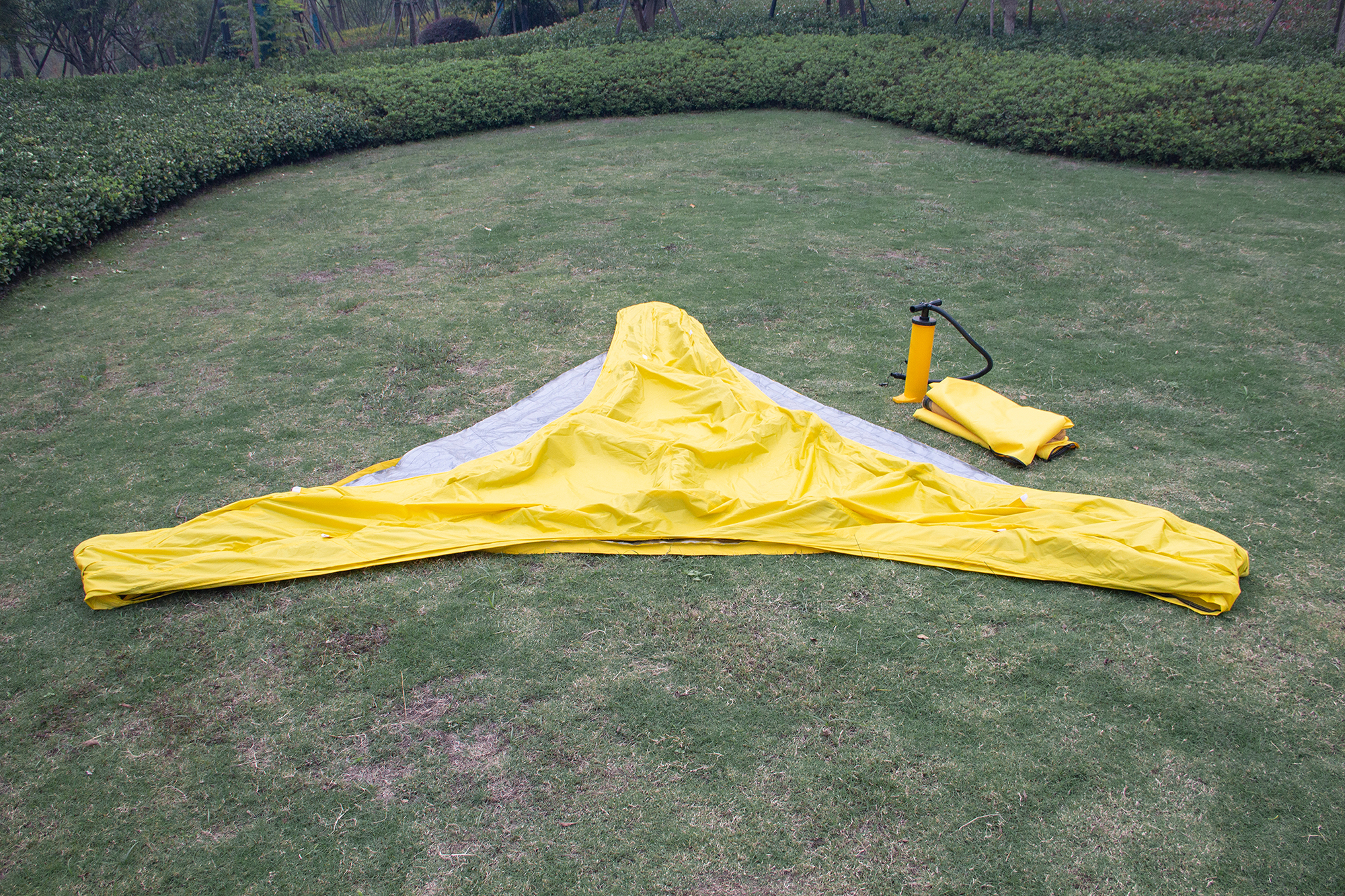
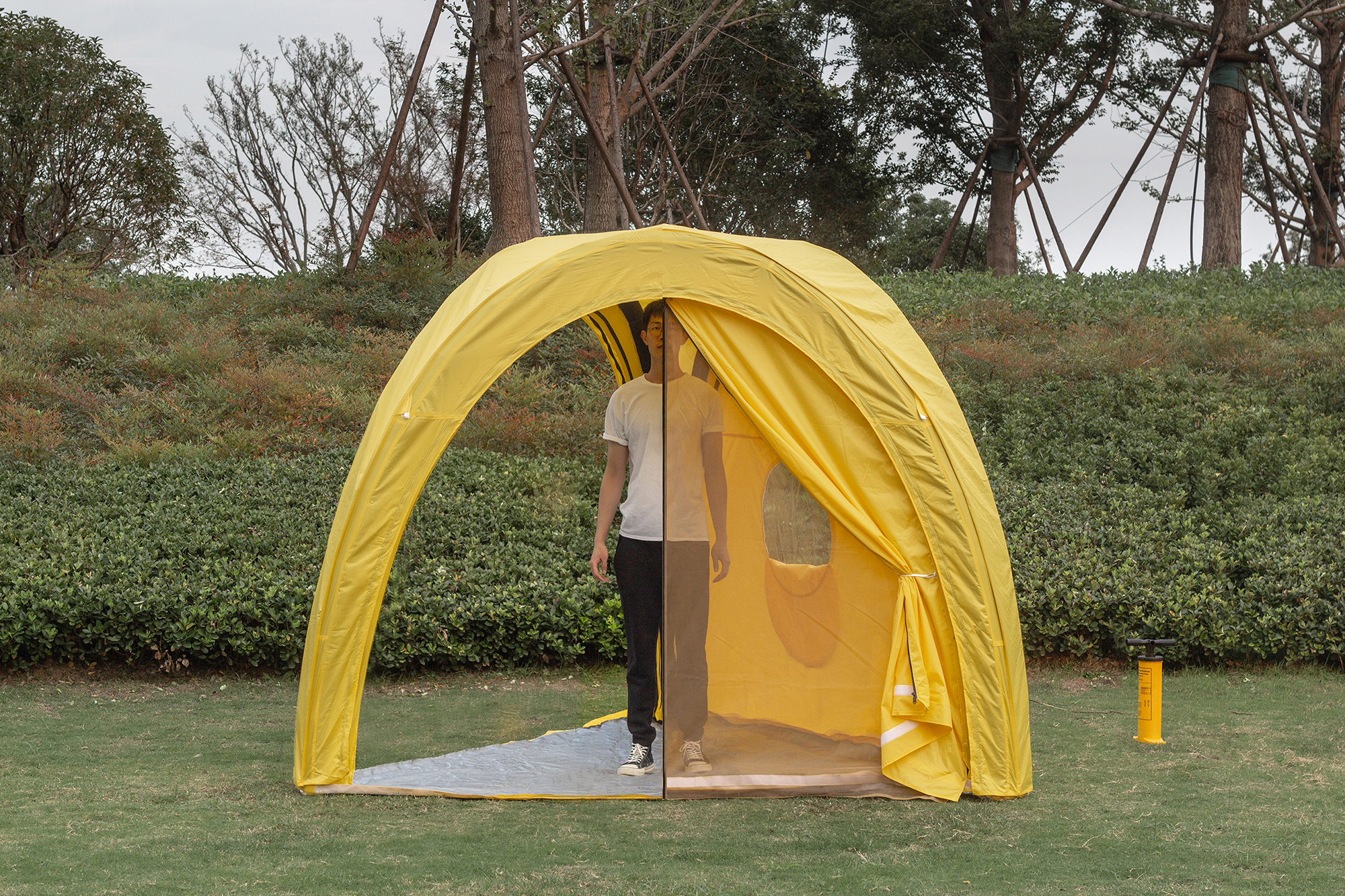
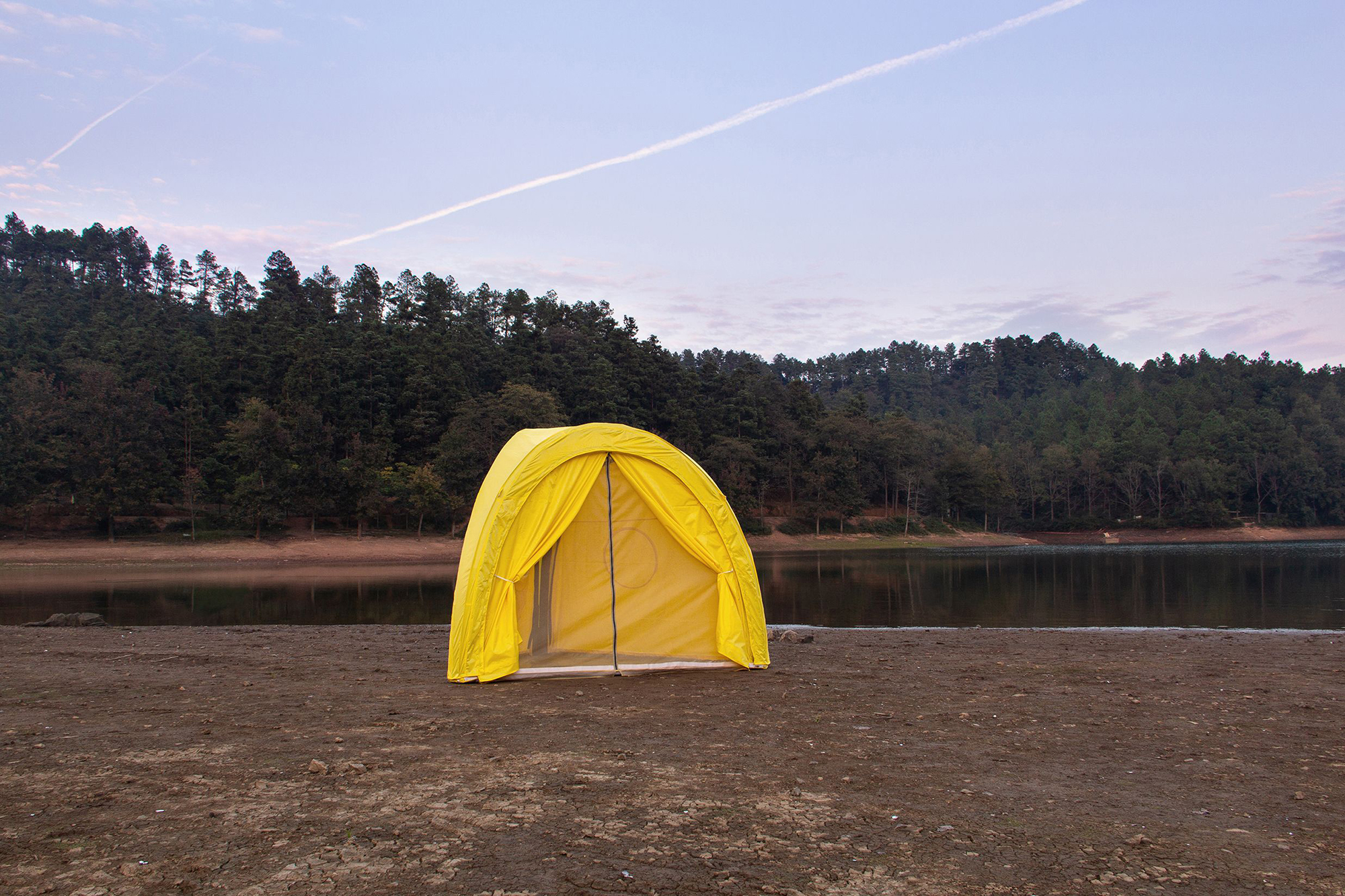
Top: The tent, in its collapsed state. Centre and bottom: The tent, inflated.
During the 2019 school year, MArch students Yi Zhang and Siqi Wang took "Designing for the 99%," a course taught by associate professor Aziza Chaouni. As one of their projects for that course, they designed a concept for a backpack-sized inflatable emergency shelter — they call it a "Mobile Emergency Safe Room" — that could be erected by a single person in just a few minutes. They decided to use their grant money to turn their design into a physical prototype.
Yi and Siqi tracked down a factory in Dongguan, a city in China's Guangdong province, that could manufacture a tent to their exact specifications. After refining their design a little, they succeeded in getting two working shelters made.
The tents have no rigid structural parts. They're held aloft entirely by four-inch-diameter, arch-shaped inflatable tubes. Large openings on the sides make it possible for multiple tents to be combined into a single, larger structure. Yi and Siqi envisioned their inflatable structures being used to create impromptu classrooms and medical-care centres. The materials in the tents are sustainable: the flysheets are made of recycled nylon, and the inflatable tubes are biodegradable.
Yi and Siqi's design is currently being field-tested by an actual aid organization. They shipped one of their prototypes to Samos Refugee Camp, in Greece, where it's being used by Humanity Crew, a group that provides emergency mental health services to refugees and other people in crisis.
Yi and Siqi are currently raising money on GoFundMe to manufacture 10 more tents.
A book of visual meditations on isolation
MArch students Jana Nitschke and Valerie Marshall put out a global call for submissions to Interiors of Isolation, their book of illustrations on the theme of social distancing in COVID times.
After a great deal of outreach, including an ad on Archdaily, they were able to drum up enough interest to assemble a volume of 35 drawings from designers around the world.
From the submissions, they selected one outstanding project, by Michel Massolar of Rio de Janeiro, to win a $100 prize. "He's looking into the viewer's perspective, and it has such a powerful impact," Jana says. "It reminds you that there are people who are stuck in these environments, and it gives you a sense of emptiness even though it's showing you a room that's filled with objects."
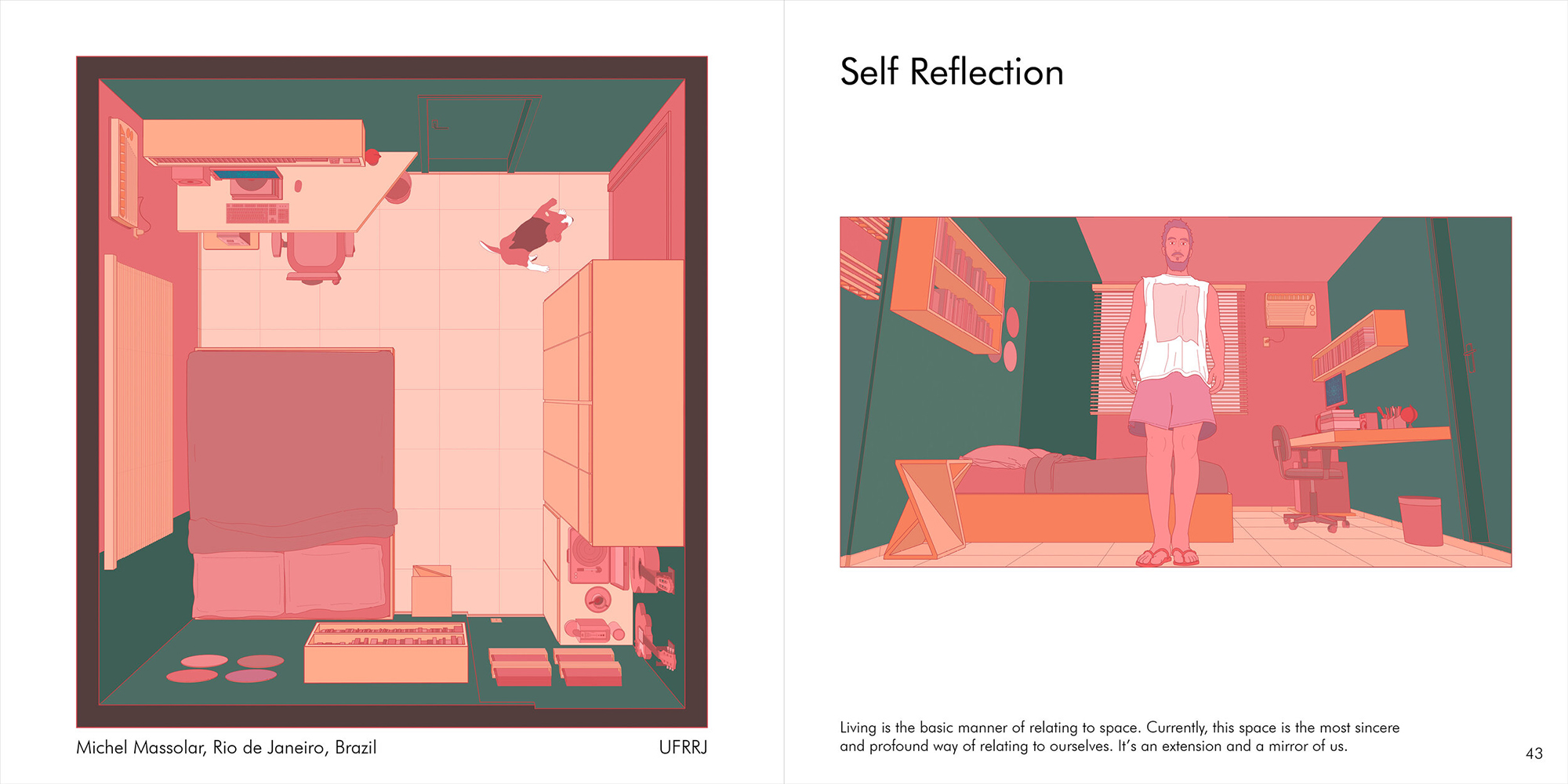
Michel Massolar's submission. Click to view a larger version.
Another submission, by Daniels undergraduate Faizaan Khan, deals with the fraught experience of living in isolation with family members who aren't accepting of homosexuality.

Faizaan Khan's submission. Click to view a larger version.
Currently, Interiors of Isolation can only be read online, on the Interiors of Isolation website. Jana and Valerie hope to create a print edition at some point in the near future.
A parody music video
Undergrad Sadi Wali worked with SExT (Sex Education by Theatre) to produce a music video called "Quarantine Dream." The song, a parody of Katy Perry's "Teenage Dream," puts a hopeful spin on the pandemic.
A compilation of pandemic-related art
Daniels undergrads Sherry Liu and Ariel Zhu teamed up with Linda Huang, a business student at the University of British Columbia, to produce We Are Together 2020, a notebook of drawings, visual art, and writing about the pandemic's effects on everyday life.
The students solicited submissions from around the world. This piece, by Maria Alini, of Mumbai, comments on the problem of domestic violence during social distancing:
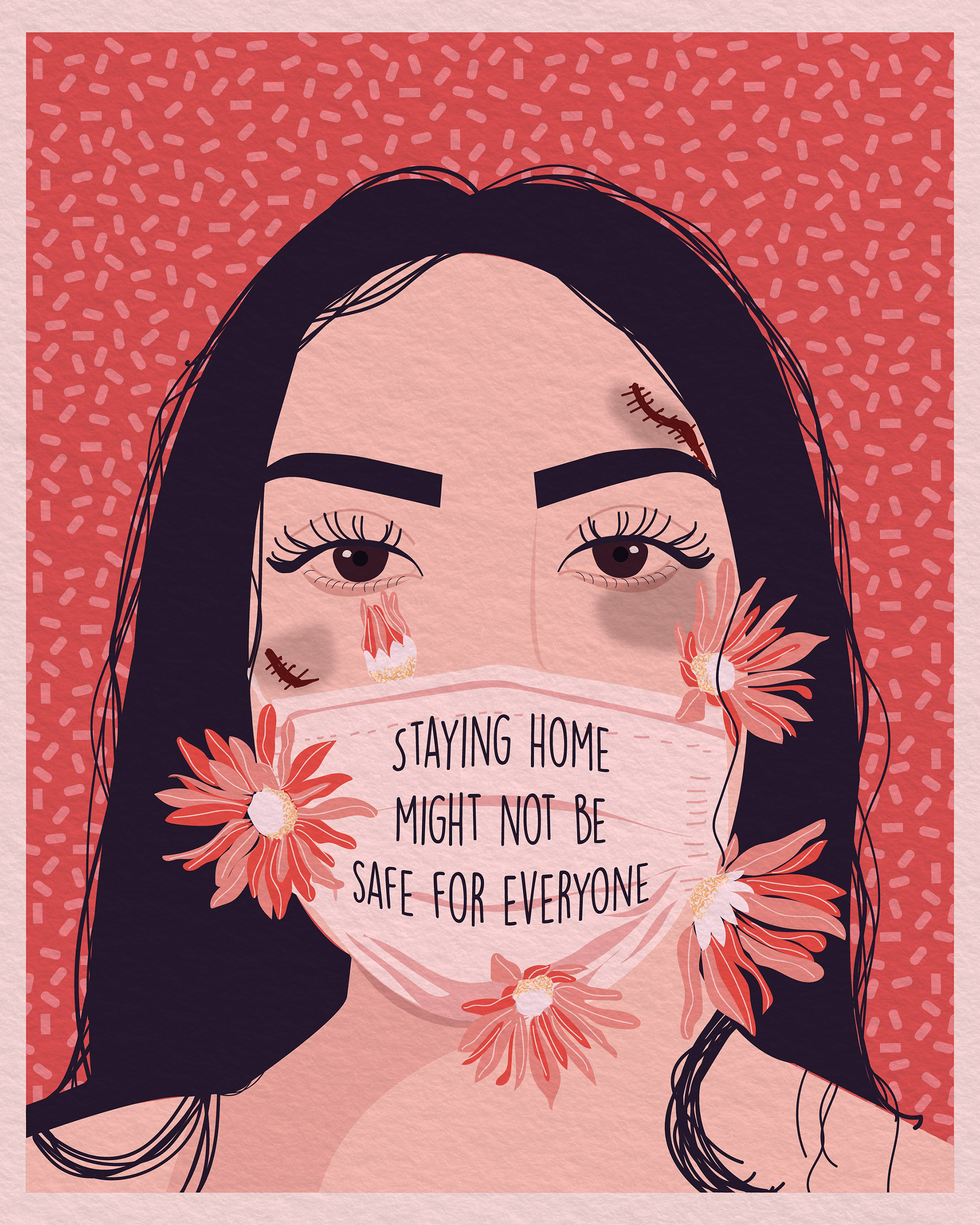
Another submission, by a 14-year-old Kuwaiti artist named Zainab Hatim, visually represents the feelings of isolation that accompany being stuck at home for long periods of time:

Sherry, Ariel, and Linda compiled all their submissions into a printed book, which they sold through the project's website. They donated the proceeds from those sales to medical research at the University of British Columbia and the University of Toronto.
Temporary shelters
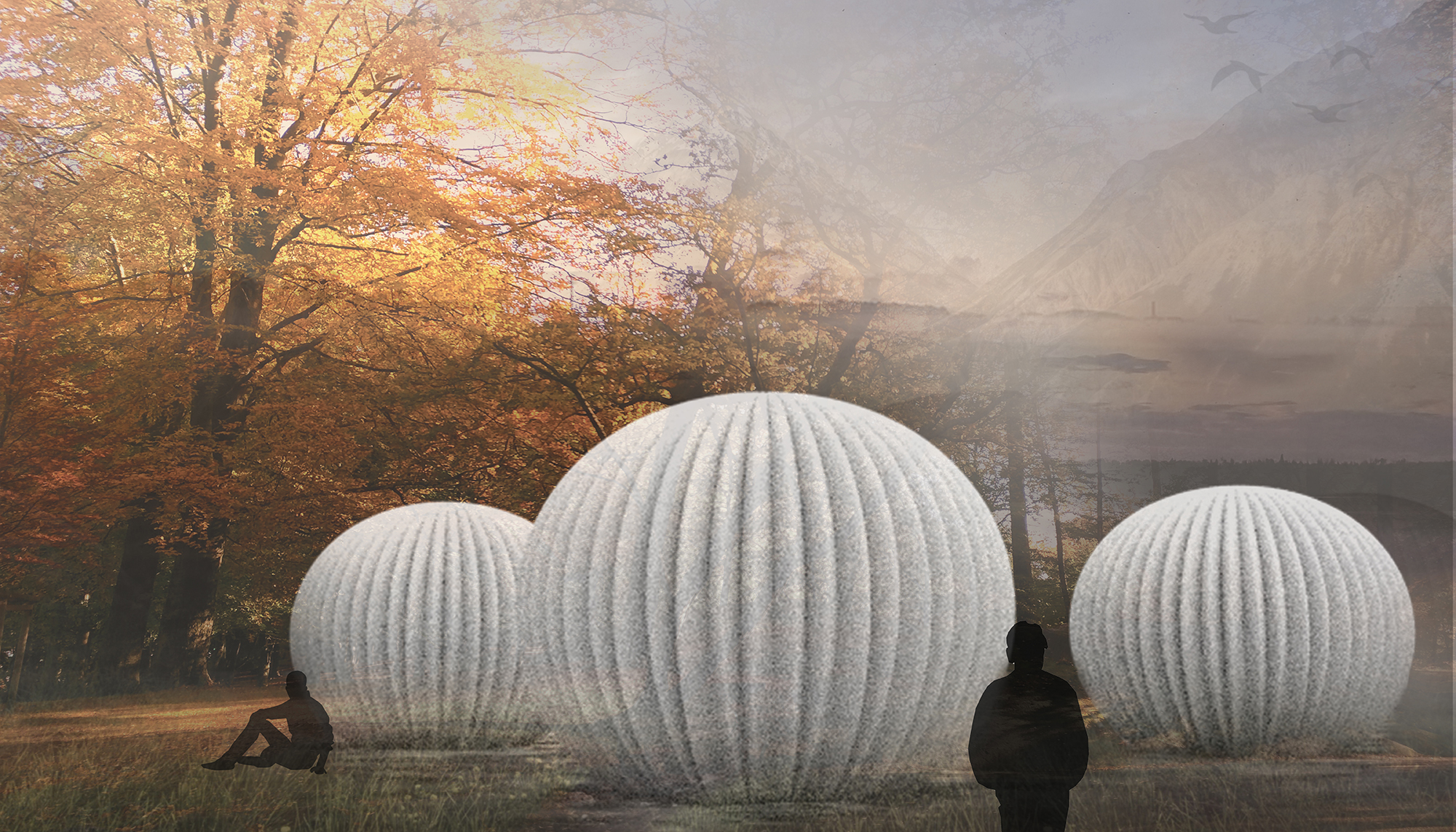
MArch student Mina Yip and MLA student Meimenat Cheng developed "Stitch," a concept for a type of collapsible emergency shelter that could be used during pandemic-type emergencies to provide temporary homes for those who need them.
An online newsletter
Undergrad Samhia Tahsin was part of a group of students who used their grant funding to publish Pandemos, a newsletter full of pandemic-related information. Read their output on KnowScience.org.

